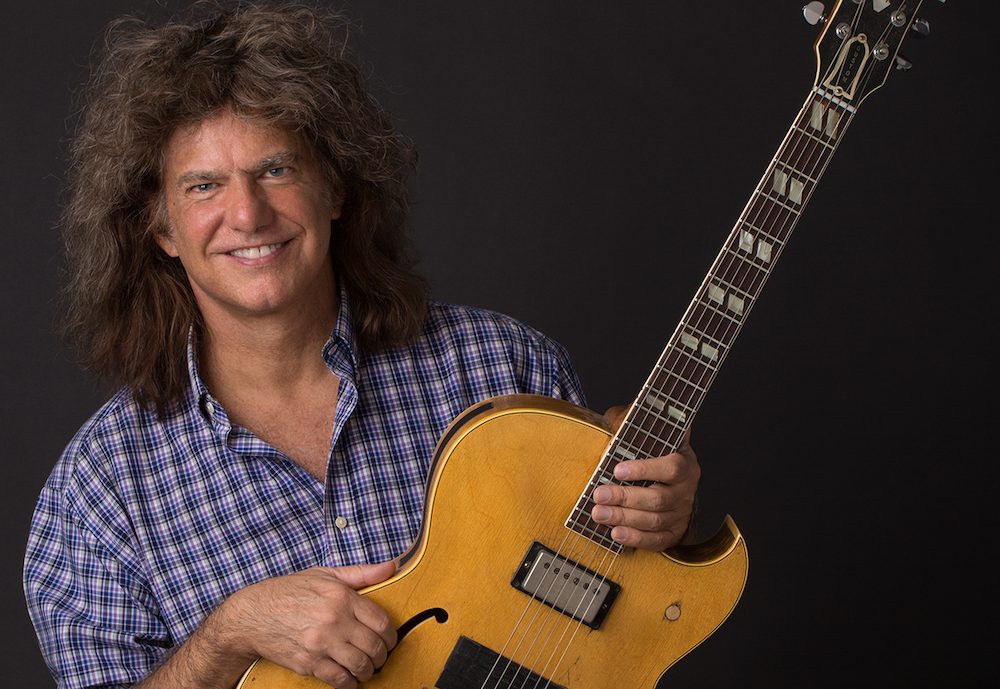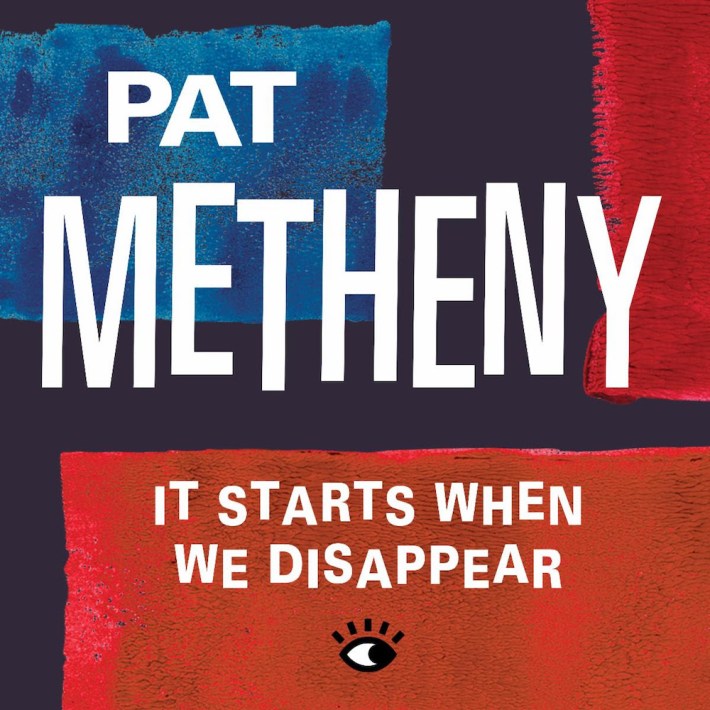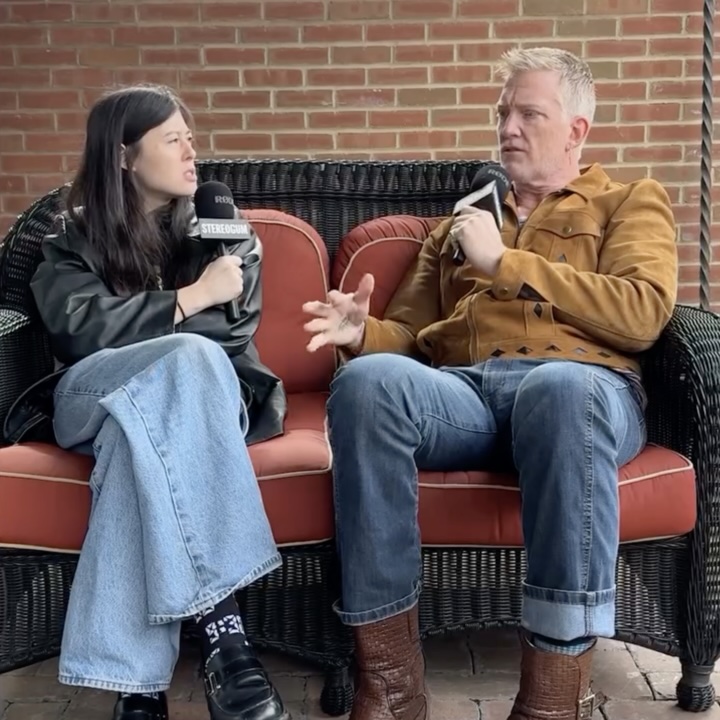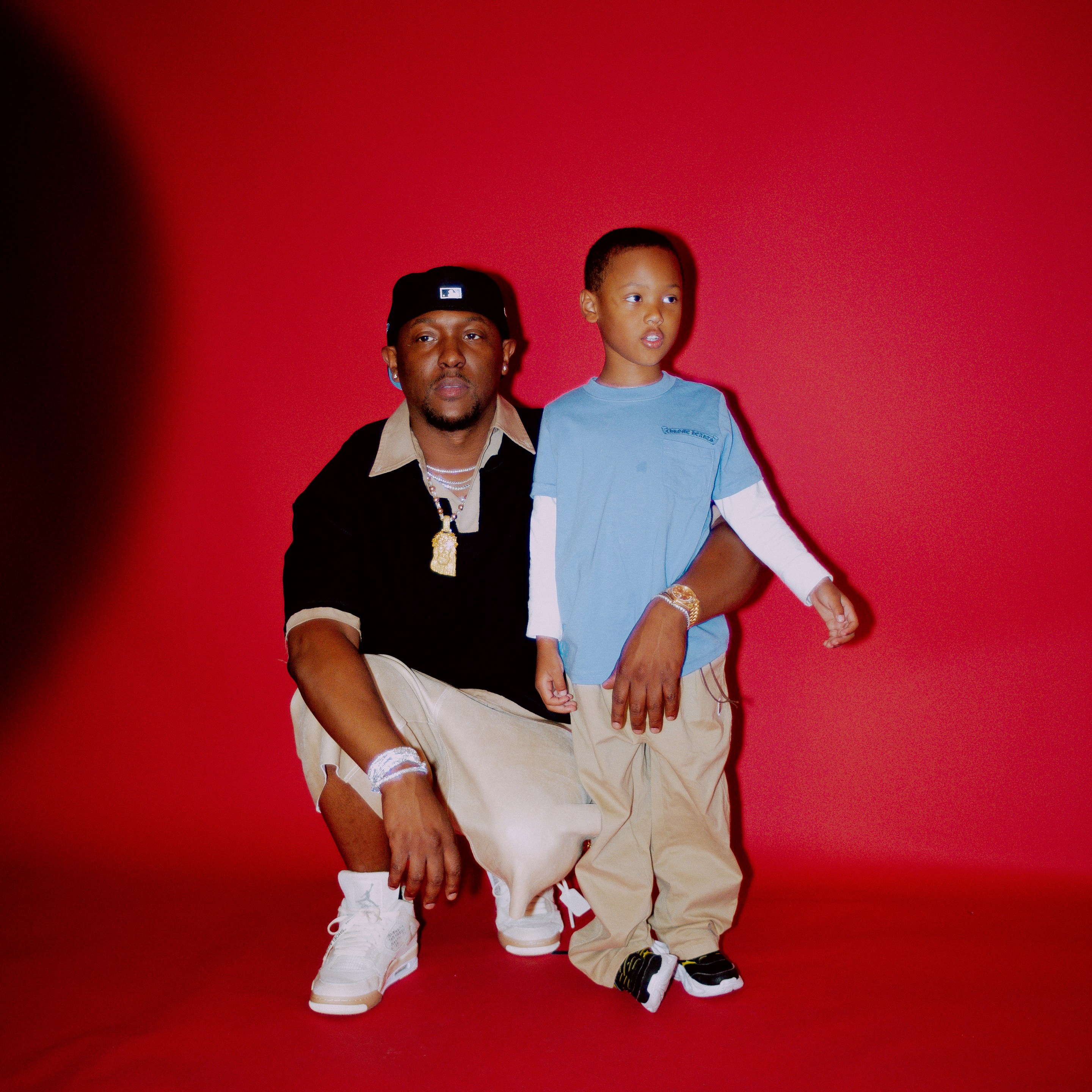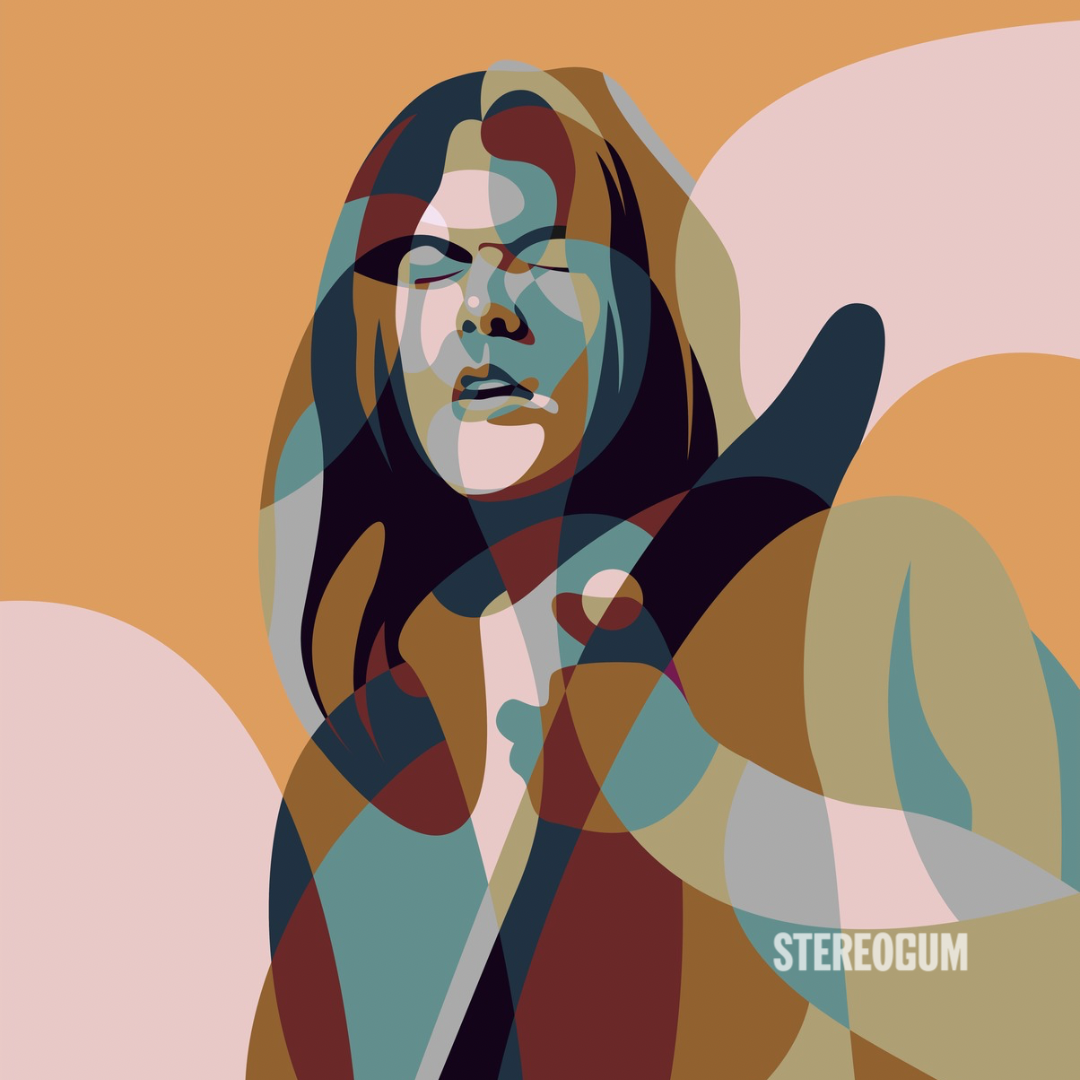Pat Metheny is one of the best-known and most critically acclaimed jazz musicians in the world. He’s received 20 Grammy awards in a dozen categories, several of which don’t even exist anymore. He’s in the DownBeat Hall of Fame; the only other guitarists in the Hall are Charlie Christian (who basically invented jazz guitar), Django Reinhardt, and Wes Montgomery. He’s an NEA Jazz Master. His debut album, Bright Size Life, was released 45 years ago, in January 1976, and he led the Pat Metheny Group, with keyboardist Lyle Mays and various other musicians, from 1977 to 2010. (Mays died in February 2020; Metheny wrote, "Lyle was one of the greatest musicians I have ever known. Across more than 30 years, every moment we shared in music was special. From the first notes we played together, we had an immediate bond. His broad intelligence and musical wisdom informed every aspect of who he was in every way. I will miss him with all my heart.")
Metheny’s work is very hard to pin down, because it covers an enormous amount of stylistic ground. The PMG’s catalog is filled with compositionally intricate pieces that blend Latin rhythms with smooth, often major key melodies; superficially slick (there’s a lot of synth, and effects on his guitar), they unfold like flowers the closer you listen. But outside of that context, Metheny has explored a lot of different ideas and ways of making music. His album 80/81 featured Dewey Redman and Michael Brecker on tenor sax (on separate tracks), Charlie Haden on bass, and Jack DeJohnette on drums; five years later, he made Song X with Ornette Coleman, Haden, and DeJohnette. He’s recorded several solo acoustic albums, and 1997’s Beyond The Missouri Sky, a set of extremely mellow duos with Haden, but he also made Zero Tolerance For Silence, a 1994 electric solo record that’s probably the noisiest thing Geffen Records ever released. (Its cover sticker bore a quote from Thurston Moore.)
For the last couple of years, Metheny has been working with keyboardist James Francies and a series of drummers in a trio he calls Side-Eye. On September 10, Side-Eye NYC (V1.IV) will be released. It’s a live album with Francies on keyboards and Marcus Gilmore on drums that includes radical reworkings of tunes from his back catalog like "Bright Size Life," "Sirabhorn," and "Timeline," as well as new music and a version of Ornette Coleman’s "Turnaround," a piece he first recorded on 80/81. We spent about an hour on the phone in early August, talking about Coleman, Haden, his multiple appearances on David Letterman’s shows, working with David Bowie, and a lot more. Metheny’s one of the most up-for-anything musicians I’ve ever talked to, and his excitement any time he can create a new playing situation for himself is both obvious and infectious. Talking to him made me want to dive deeper into his catalog than I ever have before.
Side-Eye NYC (V1.IV) (2021)
Your new record is quite intense and even heavy at times. Talk to me about what you’re going for here, and how it came together.
PAT METHENY: Well, you know, my main gig over all these years -- even though there’s the guitar aspect of it and all that -- is bandleader ... I’m also the guy who writes 90% of the music that we’re gonna play. So my goal is always to try to find people who are the right cast of characters for whatever it is I’m interested in at a particular time, and you know, I’m in a unique position now chronologically where there’s a lot of younger guys who come to New York kinda grown up with my fairly idiosyncratic thing as part of their musical diet, and can really hang stylistically in whatever that zone is that I inhabit.
So there’s this new reservoir for me of really talented young musicians to draw from. What I wanted to do was set up an environment that kind of from the get-go was designed to be somewhat rotating, where there could be different combinations of players, different editions of the band, and this particular version of it features a very uniquely talented guy named James Francies, who I don’t really have a way of describing him or even putting him on the spectrum of the tradition of organ players or piano players or keyboard players, whatever. He’s kind of in his own category, and that’s always exciting for me. That’s what attracts me like no other, is people who have a point of view that is sort of illuminating things that I had not thought of.
So I wanted to write some music featuring James in this kind of context, which is related to what the organ trio tradition is, in the sense that there’s gonna be left hand bass going on as opposed to a bass player ...and then we’re in this incredible era of drummers right now. There are more good drummers in New York right now than I have ever seen, and over the last couple of years I’ve invited 14 or 15 guys up to my place to play a little, and out of that there are literally seven or eight of them that I could hire tomorrow. And that’s after 20 years or so of not being able to find a drummer. So I’ve gone through a few of them already. On the recording it’s Marcus Gilmore, who’s quite a well-known guy already, but I’ve already moved on now to the fifth guy, who is Joe Dyson, who’s from New Orleans, and who to me is one of the greatest drummers I’ve ever played with. To me, the drummer’s always the leader of the band, it doesn’t matter whose name is on the marquee. Having a good drummer is a thing that is super important for me.
The first song, "It Starts When We Disappear," is the longest track on the record, almost 14 minutes, which is the same thing you did on From This Place in 2020. Is that a kind of "You’re either in or you’re out" thing? Why do you like throwing people into the deep end that way?
METHENY: [Laughs] I guess at this point, if anybody’s gonna follow my thing they must already be in the deep end. I would assume that people are as serious as I am, or more, and you know, it’s funny because there was a period where I’d play Radio City Music Hall for three nights and it would be sold out all three nights, and we’d play stadiums all over Europe for 10 or 15,000 people, but the tunes were always 10 or 12 or 15 minutes long. There’s never been a point where I’ve felt like oh, I need to chill this out or dumb it down or anything. When I walk onstage, and it’s always been true, I assume everyone that’s there is hipper than I am and that we’re all there for the same thing and we’re all gonna reference Stravinsky and Art Farmer and Billy Higgins and Kenny Burrell, that we all know all that stuff, and all of this is in reference to that. I mean, when the internet came along, I found out I was probably mistaken about that, but I still try to assume that anyway.
"This Is Not America" (1985)
You had a Top 40 hit with the song "This Is Not America," with David Bowie singing. How did that collaboration come about?
METHENY: I had written the score for a film that starred Sean Penn and Timothy Hutton called The Falcon And The Snowman, and that tune is kind of the main theme of the film, the body of what the score was going to be based on. The director was John Schlesinger, an incredible director, very musical. He’s a guy who in Midnight Cowboy got John Barry to do that amazing theme, he was very melody-oriented, and had directed operas and all that. And I think what drew him to want me to be the composer was at least partially the melodic thing. And once I had the tune and was pretty deep into the score, he had the idea of bringing in Bowie, and honestly, at that point in time, I was not that familiar with David Bowie. That’s no comment on anything except me. I could have told you who the drummer was on Jimmy Smith’s third record, but English pop music after the British Invasion of the Sixties was not something I followed that closely, and so I had to kind of familiarize myself a little bit with his music. But when I did I was like, this guy is the perfect guy to sing that tune. It’s right in his register, and he’s got the right kind of feeling for the song.
So we got together and man, what a lucky day for me, because I quickly realized what the rest of the world already knew, that he’s one of the most brilliant human beings that has ever lived, probably. I mean, he was unbelievably impressive in person. I sat next to him while he was screened the film for the first time and he was jotting down stuff on a yellow legal pad, and by the time it was over he had this list of about 100 song titles that were just one after the other cooler than the next, and John Schlesinger was there and saw "This Is Not America" and said, "That’s a great title," because somebody in the film says that, so David says, "OK, we’ll go with that."
He went to his studio in Montreux, in Switzerland, I finished the score in London, and then me and my band at the time, we all flew to Montreux, to the studio that is the famous Queen studio there, and we spent three days with him, and man, it was like being around Sonny Rollins or something. He was just an unbelievable master of how to do that kind of thing ...it was the tune, but something beyond the tune, too. It was an incredible joy to be around [him] for that period of time.
Beyond The Missouri Sky (1997)
One of the first interviews I ever did was with Charlie Haden, talking about Beyond The Missouri Sky. You worked with him quite a lot over the years — what was he like as a musical partner?
METHENY: Well, with Charlie, the first thing I have to say is he was my best friend. I mean, [we were] both from Missouri, we actually had met during the period that he was playing with Keith Jarrett and I was playing with Gary Burton in the early ’70s. He didn’t exactly remember that, because of the state he was in at the time [laughs]. It wasn’t really till 80/81 that we became the really close family that we were from then on. Charlie’s one of my real musical heroes. I mean going back even before Keith, with Ornette, even with Denny Zeitlin, he was – he, along with Ron Carter and [Steve] Swallow, were my three favorite bass players, and when we got to be us, friends, he was still Charlie Haden to me, you know?
And every time we played, we had the weirdest, coolest kind of rapport, and I’m really proud and happy to say it was that way for him, too. We just understood each other somehow. And I mean, the town he grew up in was about 60 miles south of the town I grew up in. We were 18 years apart in age, but we were coming from a lot of the same stuff, and to tell you the truth, it’s all there in that record. That said, he drove me crazy. He drove everybody crazy. He was a challenging cat, man. And at the same time he was one of the greatest people I’ve ever known, and he’s the only guy who could play the root of a chord and you would hear infinity. What Charlie actually played was mostly the root plus, you know, 17 dimensions of reality, and I still don’t know what that was. It was really something like nothing else, and to me anybody who gets to the something-like-nothing-else zone, that’s the shit.
Song X With Ornette Coleman (1985)
That obviously leads me to asking about your history with Ornette Coleman. You recorded his "Turnaround" on 80/81, and it’s on this new album, too, and of course you two made Song X together in 1985...
METHENY: You know, growing up where I did, I only had a few records, and somehow I wound up in the real early going, after getting my first Miles record, Wes Montgomery records, a Gary Burton record, somehow I wound up with a fairly odd Ornette record, New York Is Now, which was Jimmy Garrison and Elvin [Jones], not his regular crew. I didn’t – later I got a subscription to DownBeat or whatever and started to read about, like, there was some kind of controversy about this. To me, it just sounded great, and it mostly sounded like they were having a lot of fun. And so I kind of responded to it on that level, and then as my horizons expanded as a listener and fan of the music, I just loved those tunes and always knew a few Ornette tunes, and loved playing them, and even convinced a few of the more traditional Kansas City guys that I was playing with growing up to play some of those tunes too, and we worked ’em into the book. We’d play "When Will The Blues Leave" or something like that. Then Charlie and Billy [Higgins] and I started playing a lot – we were playing at the Vanguard, and Ornette came down to hear us one night, and then he came every night for the rest of the week, and really was into things, and he was like, "We gotta do something," and I’m like, OK, great.
What are you gonna say, no?
METHENY: [Laughs] Exactly. Ornette and Denardo and I spent about a month in a room, just the three of us, before we did [Song X], which somewhere I have cassette tapes of, which I would love to dig out -- just the three of us playing and talking and everything, and we came up with a book of tunes and then Charlie and Jack [DeJohnette] came kinda near the end. I don’t think we even really rehearsed, maybe for a day, and then we went into – weirdly, into the studio I am in right now, Studio B at the Power Station, which is now getting revived ...the smallest studio in the building, basically it was used for vocal overdubs, but it was the only room they had available, and we all five crammed into this room. There’s one [isolation] booth, so Jack was in there, there was no A/C, every time Jack would come out it would look like he had just done 10 rounds with Muhammad Ali, and Ornette just wanted to keep doing takes. I don’t think we even listened to anything. We would do a take and he would say, "That sounds good – let’s do it again!" So we’d do like six takes of each tune, and we never listened to anything, for two days, and then everybody went home and it was my record, so I had to figure out what to do, and so that night I did my best to pick the takes and we mixed them and that record came out.
Then 20 years later, I got to go under the hood and remix it and really do it right, and also found six tunes you couldn’t fit on an LP at the time, and that release, which came out on Nonesuch, [is] Song XX instead of Song X, with 20 years. That’s the good version of it. It sounds a million times better and has all the other tunes ...with the Geffen one, we recorded for two days, we mixed that third day, and it had to be mastered the following Monday for some reason or another which I can’t remember, and I knew across the 20 years it wasn’t right. So I was glad to get another shot at it.
Grammy, NEA Jazz Master Awards
You’ve won Grammy awards in about a dozen different categories — what do industry awards mean to you at this point?
METHENY: If you come to my house, you won’t see anything. I don’t keep anything around like awards or anything like that. And on the other hand, whenever anything happens, I really feel incredibly gratified and I allow myself a little bit of time to be gratified, and grateful [for] the fact that anybody gives a shit, to tell you the truth, about what I have tried to do across time now as a musician. And then I get back to it, you know? I really feel like because I’ve played so many gigs over the years, I know that I can have a great night in Bakersfield, finally I’ve got to it, and that doesn’t mean anything the next night in Phoenix, you know? It doesn’t matter what I played last night ... we’re at ground zero again. On the other hand, I mean, man, there are a few of these kind of mentions that I’ve gotten, especially in recent years, that it’s almost like it doesn’t even seem real to me.
You were named an NEA Jazz Master in 2018. That kind of institutional embrace — the US government saying "Pat Metheny is a great jazz artist" — what did that feel like?
METHENY: Yeah! And the DownBeat one too, where it’s like, Charlie Christian, Django, and Wes, and then me. It’s like, wow, really? I mean, sometimes I feel like I’m in some dream or something, you know? So I feel that way for a few hours, and then it’s like, well, B flat is still B flat, you know? B flat was B flat yesterday, it’s gonna be B flat tomorrow, and that is the same B flat that Bach had to deal with and Bird had to deal with and the Beatles had to deal with. Music is something that is fundamental in that way, and the things that surround music are cultural and to a large degree therefore political, and that goes with the issue of genre, too, like OK, I did this record last year [Road To The Sun] where it’s all written music, and it’s like, OK, so that’s classical. And I’m like, OK, if you say so, but it’s music, you know? It’s like yeah, OK, here’s something for people who are non-improvisers, but they’re brilliant in this other way, and for me it’s an incredible opportunity to interface with them, and I’m very happy to go into their realm and to provide an environment for them to be able to be who they are as musicians, too. And that’s kind of the bandleader thing for me. I want to invite people to be in a world, that of course is filtered through my sensibility and the prism of who I am as a musician, but kind of within that, there’s infinite possibilities to give other people room to discover things that maybe they hadn’t thought of. And that’s kind of the same in music, no matter where you are on the spectrum.
Zero Tolerance For Silence (1994)
Tell me about Zero Tolerance For Silence, which really showed another side of you that a lot of your fans were surprised by. What was the impulse behind it?
METHENY: I would begin by saying [that] to acknowledge the premise of the question, that that somehow is "the other," actually defeats what I feel is the point that I would make, which is that it isn’t the other. It’s the same. And that’s a hard pill for people to swallow. Including my mom, for instance. I mean, there are very, very few people who see it that way. And believe me, I get the partisans from every angle. There are many, many people who I hear say, oh well, if you wanna talk about Metheny, you gotta listen to the trio records, or you gotta hear the Group, it’s the Group, and they’re pretty sure they’re right, you know? They’re like, yeah, that other stuff, I don’t know about that. And believe me, there are people where the three records [for] them are Song X, Zero Tolerance For Silence, and The Sign Of 4. That’s the shit, for them. And great. I’m happy for everybody – that anybody gives a shit about any of it, man. I could easily still be in my mom’s basement in Lee’s Summit. So great. But my response is, no. It isn’t the other. It’s it. It’s all it.
My thing has always been: I want to understand this. I want to express what it means to me. And I want to illuminate the best I can the things that I have discovered to be true and have value through this unbelievable life that I’ve been able to devote to a very serious kind of research into the odd thing that music is on this plateau of our existence here. You can’t smell it, you can’t see it, you can’t taste it, you can’t touch it, you can’t put your hands on it, but there’s this thing ...creativity in the music to me, in whatever form it takes, that is the it, and that it can show up in a lot of different ways. Even within the realm of certain so-called genres or whatever; you can think you’re gonna go hear it because it’s some heavy musician, and that it isn’t gonna be there. And you can go hear a bunch of kids who just got a guitar yesterday, and you’re gonna hear it, maybe just for a minute or two, and maybe it’ll never be repeatable again, but ...you know, for me, there are some conditions that I recognize tend to favor it making an appearance, and in my case a lot of that is trying to be in a place where I don’t exactly know what I’m doing.
You mentioned The Sign Of 4 with Derek Bailey. I interviewed him once and saw him play a few times, and he always struck me as the immovable object, as an improviser.
METHENY: [Laughs] Yep.
So where and how did you two find a place to meet in the middle?
METHENY: Have you read his book on improvisation?
I have not.
METHENY: It’s very interesting. It’s really interesting. He was a very interesting cat, who kind of comes from Jim Hall in a way. It’s funny ’cause I’ve played with both of them, [and] before you get to the amp, they kind of sound the same. And at the same time, I completely agree with your premise, that despite all of the talk and the book about non-idiomatic improvising, it ends up being very idiomatic, you know? And that to me is a real lesson somehow, of kind of – we all have vocabularies, whether it’s the Art Ensemble of Chicago or Oscar Peterson or whoever. Nobody was ever able to or will ever be able to -- including Bird, including Trane -- reinvent their entire language every single time. Derek set a kind of line in the sand like, "OK, I’m here," and yeah, I went and played in his yard. And in fact, had I said, "Hey Derek, let’s play 'Bright Size Life,'" he couldn’t do it. He would not be able to do that.
Late Show Appearances
I think you’re the only jazz artist who was on David Letterman’s show three times. Is he a big fan?
METHENY: It’s funny, because I was a big fan of his. I thought he was great. And I think word of that got to him. He knew somebody that I knew, when he first came on the scene, like he had this daytime show, and somehow I was a fan of that, too, and I think he got word that I was a real fan of his from very early on, so yeah, I was invited several times. Also, his first guitar player, Hiram Bullock, was one of my star students when I was teaching at the University Of Miami, and [bassist] Will Lee’s dad was the dean of the University Of Miami, who came to Missouri to recruit me after I’d just finished flunking out of junior high and high school, and that was the happiest day of my parents’ life. And I lasted as a student at the University Of Miami for five days, and then I had to go see Dr. Lee and say, Dr. Lee, I can’t do this, and then he hired me as a teacher. [Laughs] So there was that connection there, too.
David Scheerer Documentaries
You’ve scored several documentaries by director David Scheerer, all about California and the environment. Is that a big issue for you personally?
METHENY: Yeah, I’m certainly environmentally concerned, you know, like we all should be. And particularly the California one, I thought was an excellent piece. I did a lot of film score type stuff kind of early on, and realized that I enjoyed doing it, [but] it takes a lot of time, and my time is probably better spent going out on the road, writing music for a band and doing tours and making records and stuff. So it’s not something I do a lot of. Every now and then something comes along and if I can squeeze it in, I do.
Publix commercial (2009)
A couple of your songs have been used in commercials — how does that make you feel, as a writer of melodies?
METHENY: Well, honestly, I think it’s probably way more than two at this point. Probably a lot of them are international. It was something I didn’t allow for a really long time, because I thought, blah blah blah blah blah blah blah, and then it kinda got to the point where it’s like, as time has gone on, I’ve got three kids and I mean, not to be crass about it, every now and then one would come along and I would go, OK.
If someone’s handing out money...
METHENY: It’s really no skin off my nose if something in Bulgaria is gonna be used for ten seconds of something. I mean, the word you touched on, melody, is a word I could definitely give you a 20-paragraph dissertation on, because it is in fact one of the three branches of music government – that’s the one you cannot really go to school on for four years. I mean, you can go to school for four years about harmony, or rhythm, but melody, it’s about a 10-minute little talk and then after that it’s mystery time. The melodic aspect of things to me is like really a significant part of it. So there’s that, yeah.
Orchestrion (2010)
The Orchestrion project, which was basically you in a room full of machines, was really fascinating. How long did you work on that — having the machines built, and composing for them?
METHENY: My first response, always, in regard to that project is that it put to rest once and for all any question about just how weird I actually am. [Laughs] The first thing you have to do at this point in time ...they book the concerts a year or two in advance now, so I had to kind of write the paper of what it was gonna be before it even existed. So it was kind of a vaporware thing, like, yes, I’m gonna get onstage with 150 mechanical instruments and perform a concert. And the genesis of this was that my grandfather, my mom’s dad, who was a very good musician, had a player piano in his basement that as a kid I was fascinated by, and I retained an interest in mechanical musical instruments over the years ...because the early player pianos [were] an opportunity for a composer or performer to make their music known without being in the room, without there being speakers. And we all just kinda take speakers for granted. We’re talking on speakers and mics now, and you go to a concert and there’s mics and speakers, and you listen to your records coming through speakers. Speakers, speakers, speakers everywhere. That did not exist before 1920-something.
But there was a period of time, 10 years or so, when you could have a player piano that would play somebody else’s music and it was being produced acoustically. And to me that’s still a very interesting, viable approach. So I managed to find, because I’ve been interested in this for years, five different types of inventors, none of whom knew about each other because they were culturally worlds apart, from Disney guys to hipster Brooklyn dudes to wacky Belgian grandsons of orchestrion makers from 100 years ago, all doing basically the same thing, which was converting MIDI into a mechanical act. So I commissioned these guys to build these different instruments, within the realms of their expertise, knowing what they were good at, and I was gonna put this together and make a record and go on the road.
So that was the idea, I had my white paper on it, they booked the gigs – problem was, all the inventor guys were late delivering the instruments. So I really only had about two weeks with the instruments to write the music and make the record with the tour looming. And so what’s on the record was really my very first impulse. Over the course of the tour, I got a lot better at it all and figured out ways to improvise using the instruments, and there’s a subsequent thing called The Orchestrion Project, which includes a film where you can really see once I got it together.
What’s funny to me [is], that’s 12 years ago now and nobody has really – man, I expected the floodgates to open. Because it’s really a cool way of making music. It's not better, it’s not worse, it’s very fertile ground, though. And you know, so far, nobody has really taken me up on it. So I’m kinda planning in a couple of years, version 2, ’cause now I know the other seven crazy inventors on the planet. They all came to the gigs [Laughs], and what could happen now is really cool, because things have come a long way since 12 years ago.
//
SIDE-EYE NYC (V1.IV) is out 9/10 via BMG Modern Recordings. Pre-order it here.
